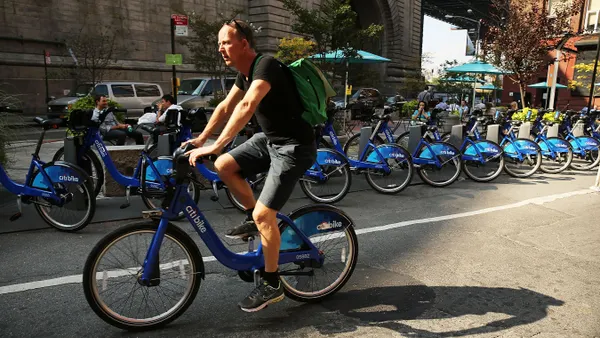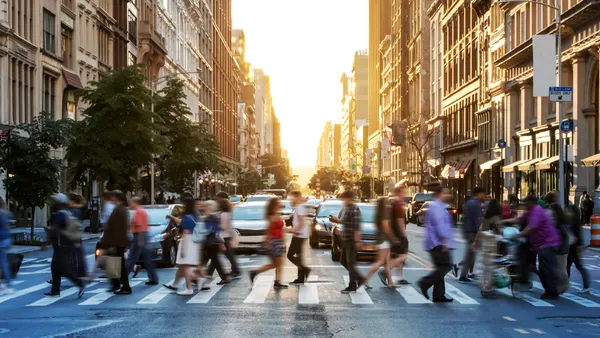Dive Brief:
- Waymo announced it will close its Austin, TX office and relocate those employees to self-driving car operations in Phoenix and Detroit. The closure will affect fewer than a dozen workers who mostly handled rider assistance and fleet support, a Waymo spokesman said.
- According to Austin Inno, which first reported the news of the office closure, Waymo brought autonomous vehicles (AVs) to Austin in 2015 and provided the region's first passenger trip in an AV. A Waymo spokesman said there were "no specific plans" to resume testing or passenger trips in the city.
- Waymo's Phoenix office handles the company's self-driving taxi fleet, which operates in the metro region, while Detroit is the company’s manufacturing hub.
Dive Insight:
Austin was an early launch site for the Google-backed self-driving car company. SUVs equipped with Google software were running on public streets starting in 2015 to gather mapping information and test how the Waymo cars would function in traffic. The city’s friendly regulatory structure and tech community made it an appealing site for early tests.
Waymo’s attention, however, is now focused in Phoenix, where it has been running a self-driving taxi service since December. The company also opened a technical center in nearby Mesa and has expanded testing in California. The taxi service has made Waymo a standout in the race for AVs, as other companies are lagging in a commercial launch. Waymo has not only used the network to gather rider feedback and log more road miles, but also to test features like in-car Wi-Fi and entertainment.
That launch — coupled with the focus on manufacturing in Detroit — left the small staff in Austin essentially working remotely, resulting in Waymo's consolidation.
However, Austin has still positioned itself as a base for driverless cars. In September, Ford announced it would launch its autonomous taxi and delivery business there, with a launch expected in 2021. Austin has also embraced driverless shuttles and eased regulations on AV testing, with an eye towards alleviating expected congestion as the city's population grows.









